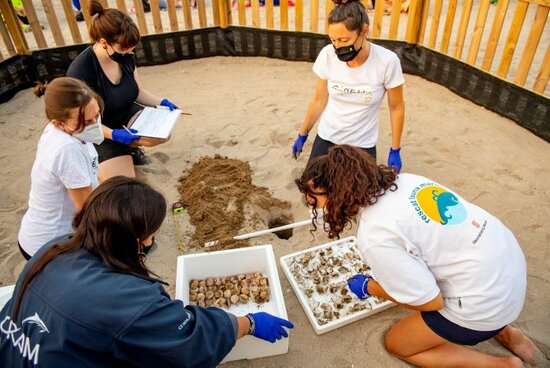Catalan beaches see record number of endangered loggerhead sea turtle nests
Phenomenon appears to be linked to climate change and the warming of traditional reproductive regions

Catalan beaches have become an ideal place for the nesting of endangered loggerhead sea turtles.
In 2021 so far, a new record was broken with five nests registered in the Calafell, Tarragona, Arenys de Mar and Serrallo beaches, and in the Ebre Delta Natural Park.
This week, 45 loggerhead sea turtles were born on Calafell beach. In Tarragona, there are currently 99 eggs, 142 in Arenys de Mar, and 81 in the Ebre Delta.
In all cases, part of the nests have been moved to the Center for the Recovery of Marine Animals (CRAM) and to Barcelona Zoo.
Thus, Catalonia has become a hot spot for the species to breed, a phenomenon that is growing significantly in the western Mediterranean.
The growth of the species breeding on our shores seems to be linked to climate change and the overheating of the traditional areas of reproduction, as reported by the Catalan government.
All of the nests are monitored by volunteers and temperature sensors have been installed to predict the date of hatching.
The hatching is expected at the end of August or the beginning of September, depending on temperatures.
If you find turtles on any beach, call 112 immediately to report the situation, or if you find traces of a turtle. On the other hand, avoid stepping on the marks they leave in the sand.
The loggerhead sea turtle
The loggerhead sea turtle is a species typically found in tropical and subtropical seas and oceans. It is threatened and listed as a vulnerable species due to the decline of its population.
Adults can reach a shell length of 120 cm and a weight up to 200 kg. Although they spend most of their lives in the marine environment, females between 15 and 30 years old go to the beach to build nests.